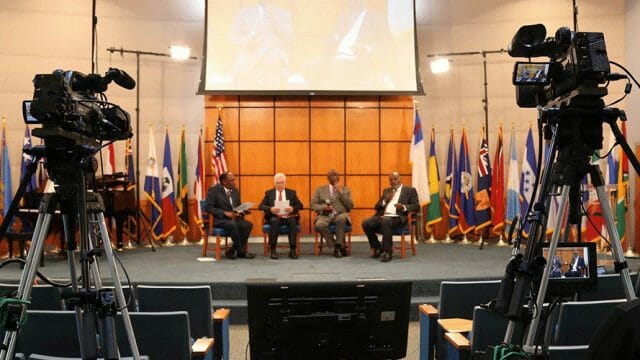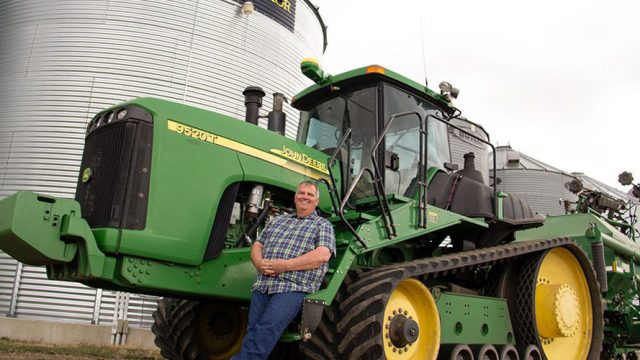Commentary-How We Got Here, and What’s Next

Unless you’ve been in a cave or in a coma, you already know about the U.S. administration policy of separating children from apprehended migrant families. This policy was briefly defended by the administration through a mistaken reading of Scripture. The policy and its defense caused moral outrage across the U.S. and the world, drawing rebukes from all living First Ladies, from many US leaders and citizens, and from many governments around the world. Like many other faith-based organizations, the Seventh-day Adventist Church in North America released a statement of disapproval.
The separation policy has now been rescinded and, given the chaotic age in which we live, our collective attention will soon shift to some new outrage or some new point of dispute. But before that happens, let’s dwell for a moment on why migrants are attempting to enter the United States. It is important that we do; their plight is very much related to the battle between Christ and Satan, the fulfillment of prophecy, and the living-out of the character of God by His people in the last days.
Most migrants to the U.S. from Central America (they come primarily from Guatemala, Honduras and El Salvador) are pulled by the economic opportunities and relative stability of the U.S. But what most don’t know is that the “pull” on them is relatively weak, while the “push” is very, very strong. To be clear: most migrants don’t actually want to be migrants —they are fleeing their countries out of desperation.
In part, they are pushed by criminal violence and weak governance, a combination that leaves average citizens exposed to the high risk of all manner of crimes with little protection and little recourse. Fearing for their lives and the lives of their children is part of daily life for many who make the agonizing decision to migrate. But violence and fear are only a part of the “push” side of the equation. What has propelled the majority of migrants into desperate action over the past four years — and has destabilized their society further — is that they simply have not been able to get enough to eat.
Starting in 2014, an epic drought gripped Central America. In a region dominated by small farmers who grow just a few subsistence crops, most families were suddenly unable to produce their food. Further, an outbreak of coffee rust related to a shift in climate destroyed the cash crop for the region. Three-quarters of households in the region resorted to desperate coping strategies, such as selling their land. Most of those migrating cited “no food” as their primary reason. [1]
In Isaiah 51:6 (ESV) we are told that the “earth will grow old like a garment” — what started out as a strong, robust, vibrant world at Creation has become weak, unstable, and full of holes. This includes not just human society but also the very foundations of the natural world as created by God. Our oceanic, atmospheric, and climate systems are also in accelerating decay. [2] Since the world God created was so spectacular that it made the angels sing and the sons of God shout for joy (Job 38:7), we can understand that the destabilization and gathering collapse of the natural world is a result of Satan’s rebellion. In part, this is because, when Satan conquered Adam and Eve and usurped their dominion, creation was separated from Creator. In Patriarchs and Prophets we are told that “it is because of man’s sin that ‘the whole of creation groaneth and travaileth in pain together’” (PP 443).
But there is a second force acting on mankind and all of nature, and that is Satan’s intentional twisting of the world to diminish its reflection of God’s character and maximize its reflection of his, Satan’s, character. It is through this “twisting” that the world created in perfection has been perverted to reflect a “survival of the fittest” system, even down to the biological level. [3] These dual forces are readily apparent in the rapid and accelerating decline of both the natural world and the character of man.
These dual forces are also clearly responsible for the desperate migration away from Central America. What people are really fleeing is the logical progression of human societies characterized by selfishness, domination, fear, and unspeakable cruelty. At the same time, they are also fleeing the effects of a natural world that is increasingly unstable and is resulting in significant increases in astonishing droughts, heat waves, floods, and all manner of natural disasters. Who can blame them for fleeing the increasing realization of a disintegrating world?
What we are seeing in human society and in the natural world is nothing less than the realization of Christ’s Matthew 24 description of what the world would be like in the last days. We are seeing the culmination of Satan’s character in humans and on earth. This being the case, we can be sure that heart-wrenching human suffering — such as has driven masses of desperate people to attempt a truly perilous migration to the U.S. — is far from over. Based on the descriptions in Matthew 24, we can expect to see waves and waves of human suffering and tragedy in the days ahead. We can also expect to see stone-hearted, usurious, or malicious responses by people groups and governments to those who are suffering. As Christ’s prophecies play out before our eyes, the real question is, where do we as end-of-time Adventists stand in all this, and what action do we take?
As the world sees the culmination of Satan’s character on earth, so too must it see the culmination of Christ’s character in His remnant people. It is a very difficult thing to be called to live out the character of Christ in this current age. Those who do will not be popular or admired, but will be abused, discriminated against, and persecuted. But here is the thing: if we do not fully embrace the character of our Lord and stand up for Him, how will the masses of the world ever see an alternative to Satan’s tactics and character? We are called upon to be an example of Christ in these last days. This necessarily means we will be radically different from the world, humbly showing love, compassion, and mercy. It means we will not shrink from aiding those in need, nor will we flee from acting out the ministry of Christ just because it will result in controversy or oppression.
But all of this raises a central question: inasmuch as many Adventists have long preferred to be seen as a quiet church filled with good people, how does our church transform into a compassionate church living out the ministry of Christ — and His ministry was definitely a compassionate ministry — in these last days? We have long hesitated to be seen as different from the world, sometimes preferring to be neither hot nor cold (Rev 3). But if we are not faithfully, steadfastly, glaringly different in our words and actions, how will the world see the character of Christ demonstrated? How will they see an alternative to Satan’s tactics?
Let me be as clear as I possibly can: in my opinion, the last days have begun, and we are living in a rapidly decaying world that is even now showing the culmination of Satan’s character at every level. Around the world, we are right now seeing millions of people in crisis, in hunger, under oppression, and under threat. As a church and as individuals, what is our response? What is our full-throated demonstration of Christ’s character? In my opinion, the testing times have begun and will only increase in pace and intensity; now we are daily being tested, tried, and refined.
How did we do on the test involving Central American children being separated from their families? Probably not so well. Let it serve, then, as a galvanizing wake-up call. With the information we have at our fingertips, we know what areas in the world are food insecure or are becoming food insecure. We also have a pretty good idea what areas of the world are tipping into drought or flooding or conflict. We have a pretty good idea, right now, what areas of the world will be in crisis in 6, 12, and 18 months. Are we as a church using this information to prioritize spreading the gospel while also preparing to assist the vulnerable?
Proclaiming Christ to an increasingly hostile world is hard. Rapidly maturing in Christ under duress is hard. But this is our lot, and we will either embrace Christ fully and model His character in a proactive, caring manner, or we will quietly shrink to the dark sidelines of this great controversy, ultimately to hear Christ say to those who talked of Him but did not live Him, “I never knew you.”
The migrant family crisis was just a gentle start to waves of agonizing moral conflicts that will test us. Let’s do much, much better. Let’s be intentional. Let’s be compassionate. Let’s openly live out the character of Christ.
Scott Christiansen thinks and writes at the intersection of human society, environmental decay, and prophecy. He is the evangelist and communication director for the Northern New England Conference of Seventh-day Adventists. He formerly worked as a country director for ADRA and holds a master’s degree in international development.
[1]. See Carrie Seay-Fleming, “Beyond Violence: Drought and Migration in Central America’s Northern Triangle,” NewSecurityBeat, April 12, 2018, https://www.newsecuritybeat.org/2018/04/violence-drought-migration-central-americas-northern-triangle/.
[2]. For a fuller articulation of these ideas, see my book, Planet in Distress: Environmental Deterioration and the Great Controversy(Review and Herald, 2012).
[3]. For a fuller articulation of these ideas, see the ARtv series of six short videos titled “Earth Is a Battlefield” at https://artv.vhx.tv/search?q=Earth+Is+a+Battlefield.









